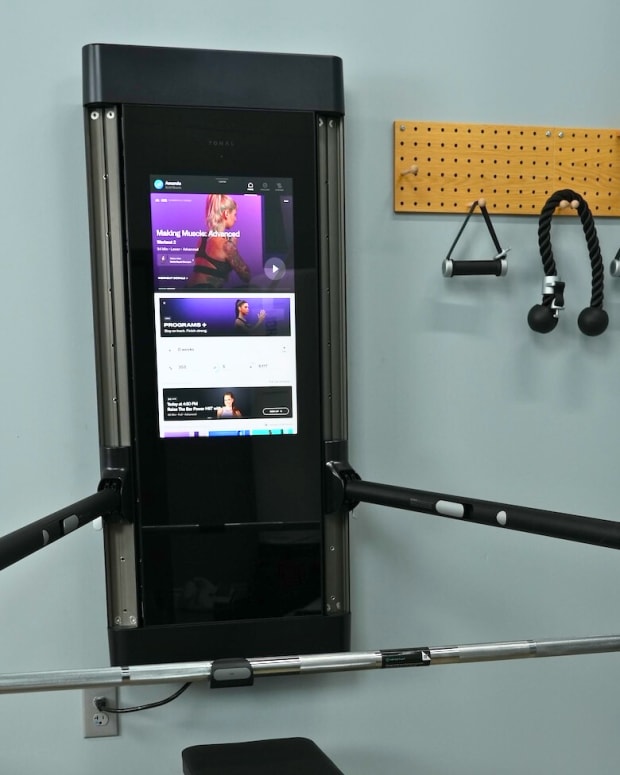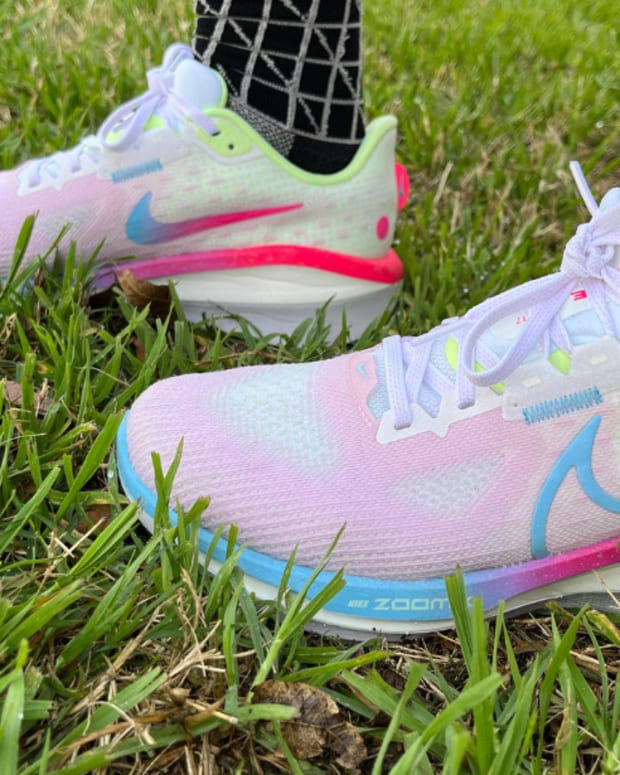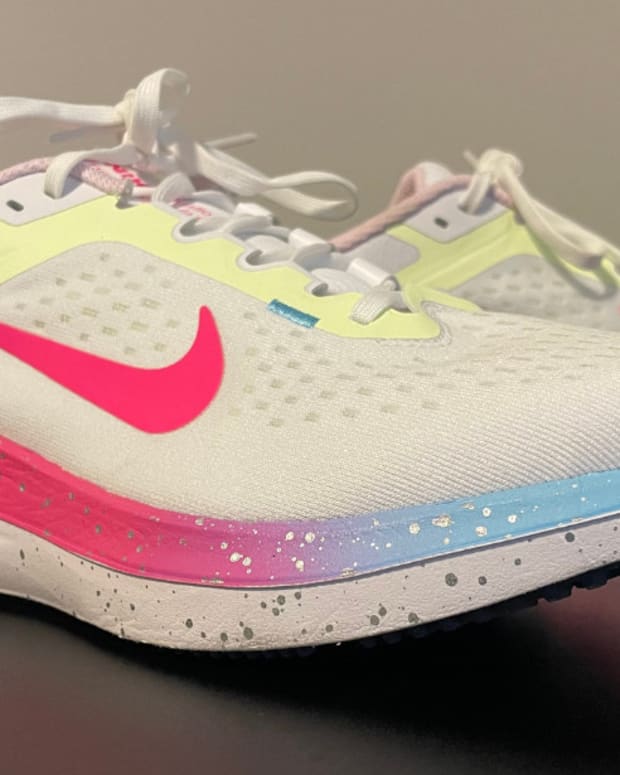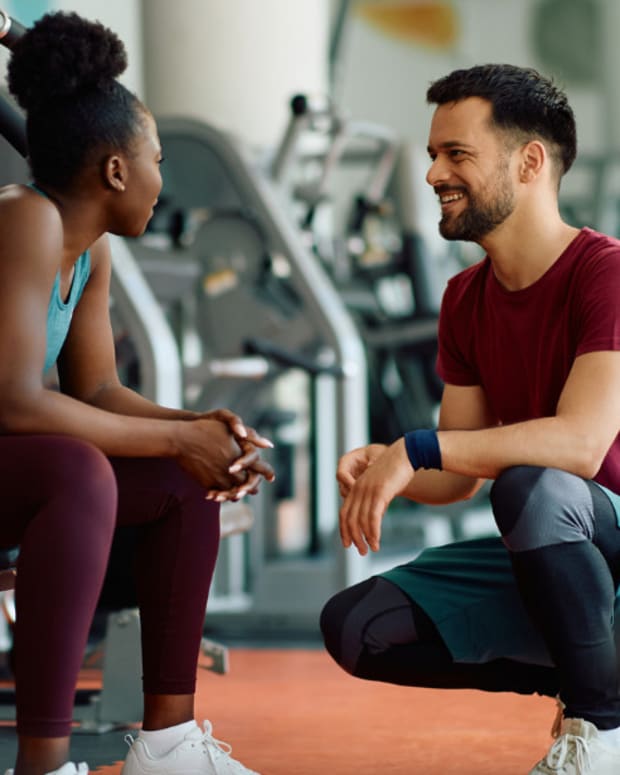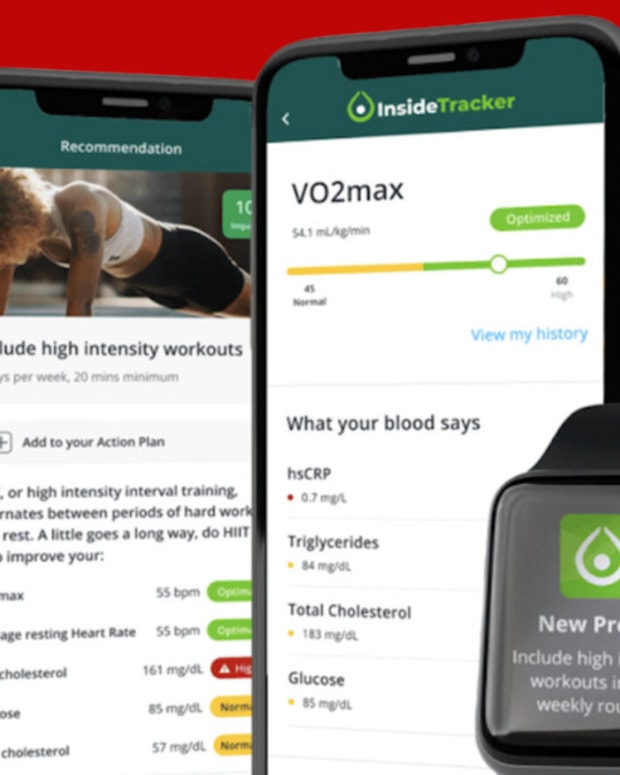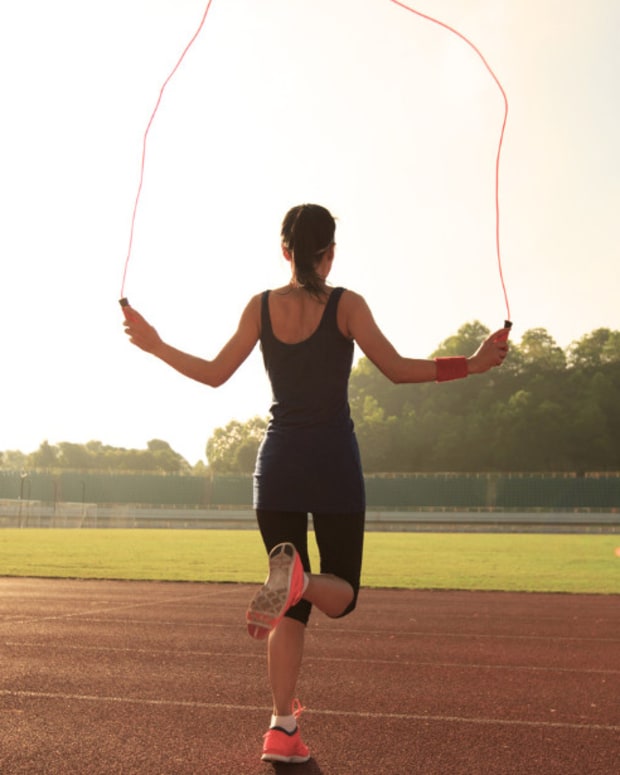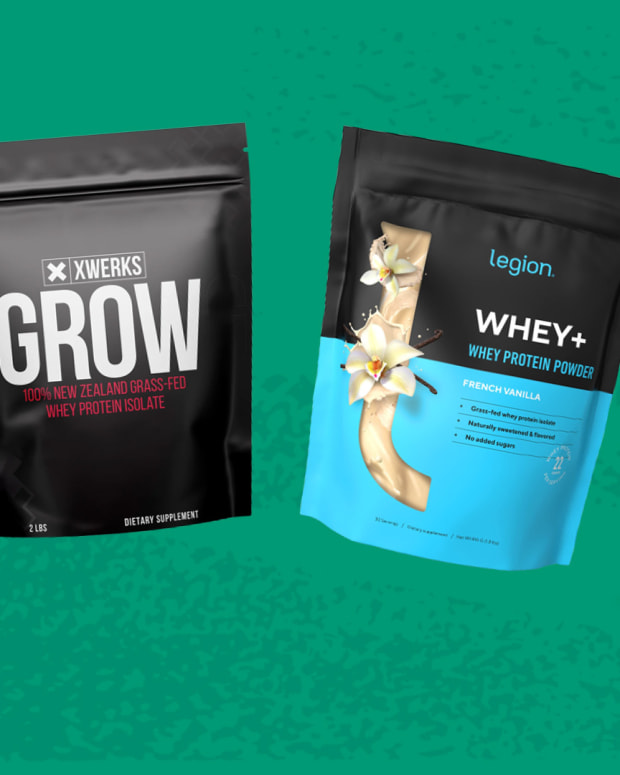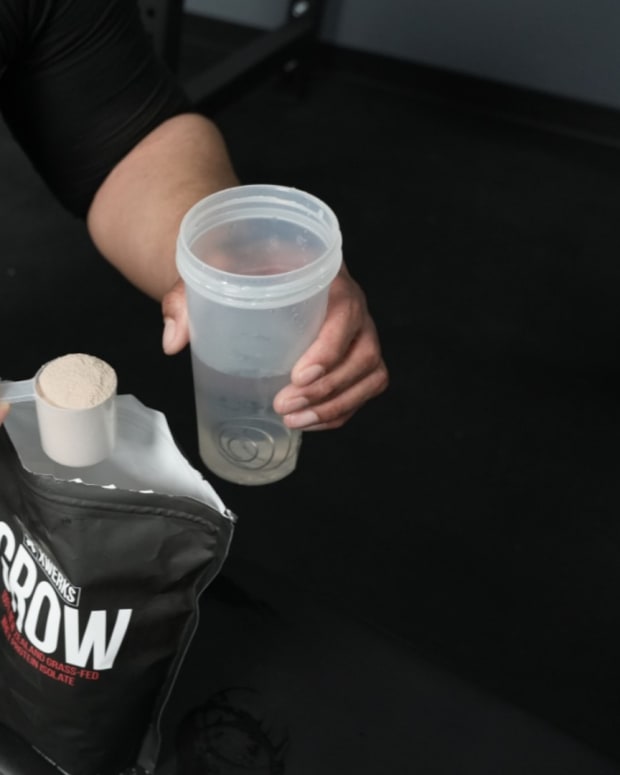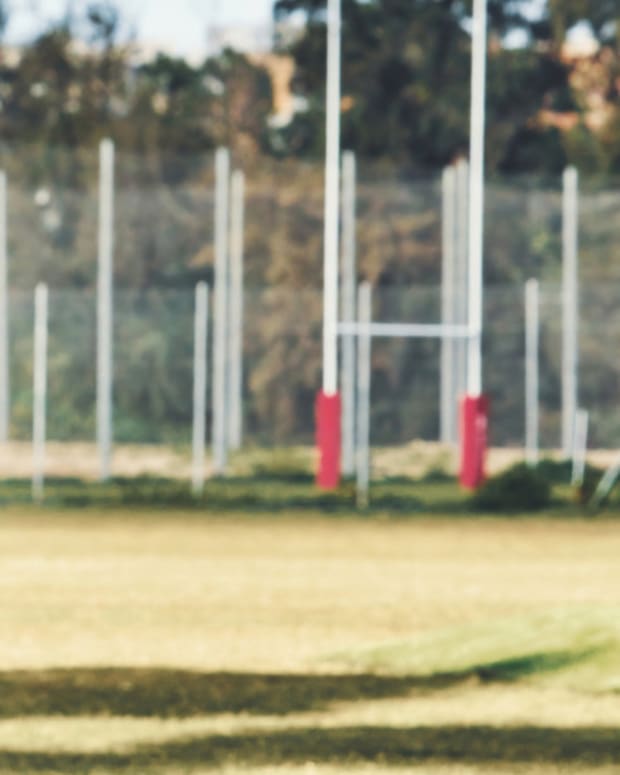The products featured in this article have been independently reviewed. When you buy something through the retail links on this page, we may earn commission at no cost to you, the reader. Sports Illustrated editorial staff are not involved in the creation of this content. Learn more here.
Whether you’re planning on hiking Half Dome in Yosemite or just want to explore your backyard a little more, a quality pair of hiking shoes can help. The best hiking shoes are a fine balance of comfort, durability, traction and weight.
In order to find the best pair for you, there are several factors to consider. Flexibility is crucial, but you’ll want to find a pair that can also protect your foot for the type of terrain you’ll be tackling, whether it’s huge chunky boulders or fine sand. When you’re racking up the miles, ounces matter, but while a lighter hiking shoe may be on your wishlist, it can’t be a trade-off for comfort, traction and stability.
Ahead we’ve pulled together a guide with everything you need to know about hiking shoes, and we’ve also curated a list of the best hiking shoes of 2024 for your consideration.
Our Picks for the Best Hiking Shoes of 2024:
- Best Hiking Shoes Overall: adidas Terrex Free Hiker 2.0
- Best Hiking Shoes for Women: Skechers Max Protect Legacy
- Best Hiking Shoes for Beginners: Hoka Anacapa Low GTX
- Best Trail Running Shoes for Hiking: On Cloudvista Waterproof Trail Running Shoes
- Best Value Hiking Shoes: Salomon X Ultra Pioneer
- Best Hiking Shoes for Wide Feet: New Balance Fresh Foam x Hierro v7
- Best Budget Hiking Shoes: Columbia Redmond III Hiking Shoe
- Best Waterproof Hiking Shoes: Merrell Moab 2
- Best Hiking Shoes for Kids: Keen Big Kids Targhee
- Best Summer Hiking Shoes: Chacos Z/1 Hiking Sandals
Best Hiking Shoes Overall: adidas Terrex Free Hiker 2.0
Key features:
- Price: $200
- Waterproof: No
- Material: Mesh upper, Continental Rubber outsole
- Weight per pair: N/A
For those looking for a hiking shoe that is comfortable for a long day of hiking, the adidas Terrex Free Hiker 2.0 should top your shortlist. Out of the box, you’ll find a lightweight hiking shoe courtesy of mesh uppers, and when traction counts, the Continental rubber outsoles are designed to offer plenty of grip in wet and dry conditions.
The adidas Terrex Free Hiker 2.0 are designed with an external heel clip and an EVA stabilization frame that combine the comfort of a cushioned trail running shoe with the stability of a hiking shoe. All in all, it’s a shoe that’s good enough to see you through your next adventure.
Users seem to agree that the shoe provides comfort and stability. A reviewer on the adidas website says that the Terrex Free Hiker 2.0 are "Super comfortable, no break-in required. Best thru-hiking shoe I have ever worn. I have pretty wide feet and these fit me perfectly."
Not only are the shoes great to wear, but the adidas Terrex Free Hiker 2.0 are also helping the environment by using yarn in the upper that contains at least 50 percent Parley Ocean Plastic and 50 percent recycled polyester.
Related Post: An In-Depth Look at the adidas Terrex Free Hiker 2 Gore-Tex
Pros:
- Lightweight
- Good traction
Cons:
- Not waterproof
Best Hiking Shoes for Women: Skechers Max Protect Legacy
Key features:
- Price: $95
- Waterproof: No
- Material: Mesh upper with leather overlays, rubber outsole
- Weight per pair: 1.68 pounds
The Skechers Max Protect Legacy is a hiking shoe designed specifically for women who enjoy connecting with nature and exploring scenic landscapes. It has a breathable mesh upper with leather overlays for extra durability and is water-repellant, so water will bead up and roll off the surface to keep you dry. The lace closures are sewn-in and the laces can be adjusted for a custom fit that will keep your foot securely in place.
The outsole is a durable rubber designed to bend and move with the foot.It has multi-directional lugs on the underside to help you maintain traction when climbing, descending and traversing slopes. Skechers also integrated a rock plate into the midsole for extra protection in these hiking shoes for women. Speaking of the midsole, the Air Cooled Memory Foam is designed to cushion your feet and keep them cool, which is a must when hiking long distances.
Related Post: Best Hiking Boots for Women
Pros:
- Flexible, durable outsole
- Multi-directional lug pattern provides stability
- Water-repellent upper is breathable
- Budget-friendly
Cons:
- Not ideal for river crossings or walking in water
- No wide width option
Best Hiking Shoes for Beginners: Hoka Anacapa Low GTX
Key features:
- Price: $170
- Waterproof: Yes
- Material: Nubuck leather, Gore-Tex textile
- Weight per pair: 28 ounces
The Hoka Anacapa Low GTX is a low-profile take on the brand’s Mid-GTX hiking boot. This low hiker features a sturdy yet flexible design, and according to reviewers on Hoka’s site, it’s great on all kinds of terrain.
The Anacapa Low GTX is designed with a removable Ortholite foam footbed that sits on a thick but lightweight compression-molded foam midsole. Pair that with padding on the tongue color and Achilles area, and it’s designed to provide exceptional comfort and support for the wearer.
On the outside, hikers will find that their feet stay dry courtesy of lightweight nubuck leather and Gore-Tex uppers. Looking at the soles, you’ll find that an extended heel geometry offers a softer impact with each step and smoother heel-to-toe transitions, and a Vibram Megagrip is oriented toward exceptional traction. And real-world users have left reviews and comments indicating as much. One reviewer on Hoka’s site said the hiking shoes are “comfortable, and the soles are just the right amount of ‘grippy.’” Another credits the Vibram soles with keeping them “upright on the steepest and sloppiest inclines.”
Pros:
- Excellent grip
- Waterproof
Cons:
- Looks clunky
Best Trail Running Shoes for Hiking: On Cloudvista Waterproof Trail-Running Shoes
Key Features:
- Price: $170
- Waterproof: Yes
- Material: Recycled polyester mesh with TPU overlays, Missiongrip rubber outsole
- Weight per pair: 21.5 ounces
If you’re looking for an all-terrain hiking shoe that’s equally comfortable on long trail runs or off-road training on gravel roads, the Cloudvista by On is shortlist-worthy. This versatile trail running shoe features a closed channel construction outsole that prevents pesky stones from getting stuck, while the grip provides traction aimed at conquering all types of terrain.
The Cloudvista is designed with a recycled mesh upper reinforced with lightweight TPU that’s perforated for breathability to keep your feet cool and dry. It also has a waterproof membrane to protect your feet from the elements. Inside the shoe, users will find a double layer of Helion Superfoam and two layers of CloudTec—both of which work to deliver resilience, rebound and comfort.
As far as sizing goes, the manufacturer suggests buying a half-size larger than your normal shoe size.
Pros:
- Elastic tongues for lace storage
- Multi-angled lugs provide traction
- TPU mudguards for extra protection
Cons:
- Expensive
- No rock plate
Best Value Hiking Shoes: Salomon X Ultra Pioneer
Key features:
- Price: $115
- Waterproof: No
- Material: Leather textile upper, rubber outsole
- Weight per pair: 13.75 ounces
The Salomon X Ultra Pioneer is a rugged all-terrain hiking shoe that offers exceptional comfort and traction. Combine that with its 13.75-ounce weight and the $115 price tag, and you have our pick for the best-value hiking shoes.
This hiking shoe has a sporty low-top that's packed with everything you need for a comfortable hike. Specifically, the Sensifi construction holds the foot securely so it's not sliding around during the descent. The outsole includes two types of rubber and a patterned heel for traction on a variety of surfaces. The foam cushioning keeps you comfortable and the leather textile upper remains durable after frequent use.
Reviewers on the Salomon website rate the X Ultra Pioneer 4.5/5 stars and mention the shoe’s comfort and durability. One review says, “This shoe feels great, and it has a snug fit. Stability is good enough for light trails or long days on your feet.”
Pros:
- Lightweight
- Secure fit keeps your feet from sliding around
- Protective toe clip
Cons:
- Not waterproof
Best Hiking Shoes for Wide Feet: New Balance Fresh Foam x Hierro v7
Key features:
- Price: $139.99
- Waterproof: No
- Material: Synthetic and mesh upper, Vibram Megagrip outsole
- Weight per pair: 11.2 ounces
The New Balance Fresh Foam Hierro V7 is the latest iteration in the Fresh Foam Hierro line and is ideal for those with wide feet because there are standard, wide and extra-wide size options. Those who are familiar with this hiking shoe will be happy to know that the V7 is the lightest of the bunch and also the one that delivers the most cushioning. Other updates include the shoe’s Vibram Megagrip outsole with a new 4.5-milimeter lug pattern that provides exceptional traction.
Users will also find a roomy toe box and Toe Protect technology that deftly protects their feet from any stones, roots and debris in their trail path.
Digging through the reviews on the New Balance site, we find quite a few users who compliment the versatility of the Fresh Foam Hierro V7, praising its ability to tackle a range of terrains. One reviewer noted the Fresh Foam Hierro V7 has “the ability to switch up the terrains without the tread getting chewed up super easily. A few of my favorite trails go from rocks, dirt or gravel and quickly switch to a paved or wooden bridge. Being able to take on these and not start slipping as soon as I go onto the trail again is a huge plus.” Another reviewer wrote, “Just put 40 miles on them in four days on some rocky, wet trails, and they never slipped, and my feet never felt tired.”
Ultimately, it looks like the Fresh Foam Hierro V7 provides a lightweight, cushioned and grippy ride, but it’s worth noting that some have indicated that it may run small and narrow.
Pros:
- Excellent traction
- Lightweight
- Breathable mesh upper and midsole
Cons:
- Colors may not be universally appealing
- May run small/narrow
Best Budget Hiking Shoes: Columbia Redmond III Hiking Shoe
Key features:
- Price: $88.65 (many sizes are discounted)
- Waterproof: No
- Material: Synthetic leather/Rubber outsole
- Weight per pair: 2.16 pounds
While the price of the Columbia Redmond III varies with size, you’ll find that many sizes retail for less than $100.
This lightweight and durable hiker combines with the brand’s Techlite midsole and its signature Omni-Grip rubber outsole, creating a hiking shoe with excellent cushioning and good traction. Mesh and suede uppers, a gusseted tongue that keeps debris out of your shoe, a toe overwrap that guards common wear points, and reinforced toe and heel barriers round out a nice list of features of the Columbia Redmond III hiking shoe.
All in all, the Columbia Redmond III is an agile hiking shoe, with Amazon reviewers noting that it’s “lightweight but tough.” If you anticipate hiking in wet conditions, you should note that some reviewers indicate that Redmond III hiking shoes may fall short in wet conditions. One Amazon reviewer specifically noted that Redmond III’s are “Slippery on wet pavement.”
Pros:
- Budget-friendly
- Lightweight
- Protective toe clip
Cons:
- Heavier than many other pairs
- Underperforming traction, according to some reviewers
Best Value Hiking Shoes: Salomon X Ultra Pioneer Aero
Key features:
- Price: $115
- Waterproof: No
- Material: leather textile upper, rubber outsole
- Weight per pair: 11.5 ounces
The Salomon X Ultra Pioneer Aero is an all-terrain hiking shoe that offers exceptional comfort and traction. Combine that with its 11.5-ounce weight, and you have our pick for the best-value hiking shoes.
Users seem to agree that the shoe has great value. A reviewer on the Salomon website says “I got these a month ago and love these shoes. I found Salomon looking for work hiking boots. I will never buy any other kind of shoes now.”
The Salomon X Ultra Pioneer Aero is a low-top hiking shoe that consists of all the features that make for a comfortable hike. Specifically, a patterned heel area that strongly grips any terrain and a foam-cushioned interior for comfort. Altogether, the Salomon X Ultra Pioneer Aero is an excellent pick for walking, hiking or running.
Pros:
- All-terrain hiking shoe
- Good traction
Cons:
- Not waterproof
Best Waterproof Hiking Shoes: Merrell Moab 2
Key features:
- Price: $140
- Waterproof: Yes
- Material: Pig suede leather and breathable mesh upper, synthetic sole
- Weight per pair: Two pounds two ounces
The Merrell Moab 2 has a waterproof membrane that’s designed to seal out water, while also being breathable enough to let moisture escape.
Other design details of the Merrell Moab 2 include the Kinetic Fit Advanced removable, contoured footbed for superior cushioning, a Merrell Air Cushion in the heel for shock absorption, and a Vibram TC5+ outsole for traction.
With hundreds of five star reviews on the Merrell website, the Merrell Moab 2 is clearly a fan favorite. One reviewer noted the Moab 2 is “Comfortable, best in class, no need to brake in, high quality!!!"
One minor demerit for the Moab 2 may lie in its weight. Coming in at just over two pounds, it’s one of the heavier hiking shoes on our list.
Related Post: The Best Water Shoes for Your Summer Adventures
Pros:
- Waterproof
- Breathable
Cons:
- Heavier than many other hiking shoe models
Best Hiking Shoes for Kids: Keen Big Kids Targhee
Key features:
- Price: $74.95
- Waterproof: Yes
- Material: Leather textile upper, rubber outsole
- Weight per pair: 1.3 pounds
When hiking is a family affair, you might consider setting your little one up with a hiking shoe like Keen’s Targhee Low Waterproof hiking shoe.
Made with a PU midsole and a leather and textile upper, the Targhee hiking shoe is lightweight and quite durable. Add in Keen.Dry—a proprietary waterproof, breathable membrane that lets vapor out without letting water in—and you’ve got yourself a waterproof shoe that can stand up to whatever your kids’ hike can throw at it.
The Targhee Low also features a multi-directional traction grip system, a mesh lining that helps keep their feet cool, and a padded collar and tongue that minimizes irritation and discomfort.
Non-marking rubber outsoles and a hook-and-loop closure that snugs the fit of the shoe at the ankle rounds out a nice list of features on this shoe.
Pros:
- Waterproof
- Lightweight
- Multi-directional traction grip system
Cons:
- Reviews indicate that the shoe might be narrow
Best Summer Hiking Shoes: Chacos Z/1 Hiking Sandals
Key features:
- Price: $100
- Waterproof: No
- Material: Polyester jacquard upper, ChacoGrip rubber outsole
- Weight per pair: 21.2 ounces
While you might think that sandals and hiking don’t go together, the Chacos Z/1 Hiking sandals prove you wrong. These sandals feature a polyester jacquard webbing that wraps around your foot and through the midsole, and the result is a hiking sandal that’s fully adjustable, so it feels customized. And while sandals aren’t known for their traction, Chacos’ Z/1 hiking sandals are designed with a three-millimeter lug performance outsole for no-slip traction.
Many reviewers on the Chacos website note that this sandal provides excellent arch support, and the soles are thick enough to hold up on rough terrain.
Pros:
- Good traction
- Open design for warm-weather hiking
- Good arch support
Cons:
- Open design doesn’t protect against injuries on rough terrain
What Makes a Good Hiking Shoe?
Generally speaking, hiking shoes are intended to cushion your feet across the miles and provide good traction on steep, slippery, muddy and wet terrain. A good hiking shoe will keep you in a vertical position through it all.
The best hiking shoes are durable, supportive and grippy. And if you choose right, your hiking shoes will be lightweight, flexible and comfortable for walking whether you’re planning on doing two miles or 20.
Why Buy Hiking Shoes?
If your outdoor excursions are limited to mild or short hikes, you can probably get away with wearing sneakers or running shoes. However, if your wanderlust takes you past the 10-mile mark, you’re more likely to encounter uneven, rocky or slick terrain. If your motto is the rougher, the better, you’ll want to ensure that your feet have maximum protection. This means durable waterproof construction, excellent grip, and maybe even ankle protection—all of which you can find in a hiking shoe.
Not only will hiking shoes protect your feet and support your body over the long haul you’re planning, but they also offer added protection from trips, falls, twisted ankles, sore feet and blisters.
It’s worth noting that while the terms are sometimes used interchangeably, there are differences between hiking shoes and hiking boots.
Hiking shoes check the boxes for comfort, durability and support, and both female and male hikers will find that they’re great for different types of hikes and varying terrains. These shoes are equally useful on casual hikes or long treks, and they can take a pretty good beating, but anyone who’s worn a hiking shoe on very muddy terrain will probably tell you they’re not built for that—mud can make its way into the shoe via the low top.
Like hiking shoes, hiking boots are also durable and offer plenty of support. Unlike hiking shoes, hiking boots tend to last longer, and they’re obviously the better choice if you plan to hike in rough, wet or snowy terrain. Moreover, if you’re scaling up the sides of mountains or steep hills, you might want to spring for hiking boots that typically offer better ankle support and grip.
How to Choose the Best Hiking Shoes
Support
Typically, the support from your hiking boot will likely come from the midsole and ankle cuff. A robust midsole provides ample support and protection from any rough terrain you may encounter, and ankle cuffs on your hiking shoes or boots will keep your ankle in place and prevent any twisting. It’s worth noting that while you might think that a stiff ankle cuff may be better on a hiking boot, that’s not always the case. Ideally, you want an ankle cuff that stabilizes your ankle, but one that’s too stiff can lead to sore feet and blisters.
Cushioning
Shock absorption is crucial when you’re looking at hiking shoes, even more so when you’re hiking on rocky and uneven terrain. Hiking shoes typically have protection built into the sole to protect your foot from sharp or jagged rocks.
Weight
If you’re walking one or two miles, a little extra weight won’t make much of a difference. However, if you’re walking 10 or 20 miles, the weight of your hiking gear becomes much more important. For that reason, you might want to consider the weight of your hiking shoes. Ultimately, you’ll need to find what works best for you by trying out a few different pairs.
Tread
When shopping for hiking shoes, you’ll no doubt come across a wide variety of tread depths and patterns. Ultimately, you’re looking for a shoe with exceptional grip, but your destination should play a heavy hand in your decision.
Shoes with a deep tread, also known as lugs, are an excellent option for muddy or loose ground, while shoes with shallow treads tend to grip better on rocky surfaces.
Those who hike frequently are likely to have more than one type of hiking shoe and rotate accordingly. But if multiple hiking shoes are not in the budget, you might consider purchasing a more versatile hiking shoe that works with a variety of terrains.
Fit
Like any shoe, the fit of your hiking shoe is crucial. You’re going to be in them for miles and miles with civilization miles away and out of reach. When you’re shopping for hiking shoes, you'll want to do the following:
- Consider your size
While you may be well aware of your foot size, it’s important to keep in mind that shoes can fit differently across brands and across styles within brands. So, while you might be a size 10 in adidas, your size might be slightly different in a Merrell shoe.
Beyond keeping an open mind regarding your shoe size, it’s important to account for orthotics. Orthotics can have a profound effect on the fit of your shoes, and you shouldn’t guess here. If you wear orthotics, make sure you have them with you when fitting a hiking shoe.
- Try your hiking shoes on at the end of the day
Everyone’s feet swell throughout the day, so the best time to try on a hiking shoe is at the end of your day. Doing so while your feet are swollen will more closely simulate what your foot will feel like in a hiking shoe after a couple of miles.
- Wear the proper socks
Simply put, don’t try on hiking shoes with a pair of dress socks. When you’re assessing the fit of your hiking shoes, try to wear the socks that you’ll be wearing on your hike. If that’s not possible, do your best to match the thickness as best you can.
Related Post: The Best Hiking Socks to Try
- Walk around in the shoe
The best way to assess whether a hiking shoe fits you and is suitable for your purposes is to spend some time in the shoe. To that end, shoe stores or sporting goods stores are pretty good with customers putting hiking shoes on and walking around the store as much as they want to assess the right fit. If at all possible, look for stairs or inclined surfaces that you can test out.
- Break your boots in—whether you think you need to or not
Even when hiking shoes feel like two little clouds on your feet, you’ll want to break them in before heading out on a 15-mile hike—trust us on this. Wear them around the house, and on several shorter hikes before embarking on a long adventure.
- If you’re shopping online, read the reviews
Whether you’re shopping online or in person, you might consider reading the reviews for the shoes on your shortlist. The great thing about the information age is that when a product has a shortcoming, people are usually more than willing to shout it from the rooftops. Negativity isn’t the only information you can gather from reviews—people are also likely to share the good stuff about fit, function and real-world performance that you just can’t get from a product description.
Materials
Hiking shoes are made from materials ranging from heavy, thick leather to ultralight nylon. Consider where you’re going and what you’re doing. If you foresee that you’re headed out in wet conditions, waterproof Gore-Tex hiking shoes should probably be at the top of your list. While this type of construction may reduce the breathability of the shoe, it’ll keep your feet dry for the duration of your hike.
On the other hand, if you prefer not to be weighed down by your gear or you’re headed out for a short hike on relatively even terrain, you might opt for hiking shoes made from nylon or some other type of lightweight synthetic. Just note that these shoes will probably wear down much faster than a leather hiking shoe.
Intended Use
And finally, when shopping for hiking shoes, you want to consider their intended use. If your travels take you on shorter hikes on well-defined trails and you’re not carrying a lot of weight, a lightweight hiking shoe would probably do just fine.
Beyond the type of trail you’re exploring, it’s also important to think about the type of weather you’ll be up against. If you’re headed out in the spring and summer or in dry conditions or checking out a local trail in mild temperatures, a lightweight hiking shoe with a mesh upper that allows for maximum breathability would be ideal. If you’re headed out during the fall and winter months, where you might be up against snow and ice or in wet or muddy conditions, you’ll probably appreciate a waterproof hiking shoe.
Hiking Shoe FAQs
What is the difference between a hiking boot and a hiking shoe?
Hiking shoes are typically softer, lighter and more flexible than hiking boots; as a result, they tend to offer less support as well. While a lightweight hiking shoe may often come at the expense of ankle support, the trade-off is often worth it for seasoned hikers.
Can I wear hiking shoes for walking?
Hiking shoes are designed to handle rough terrain and harsh weather conditions, so while they might be a little overkill for day-to-day use, they’re fine for daily walking. Keep in mind, though, that daily use on pavement will likely wear them out faster. So, if you plan to use them for hikes somewhere down the line, they may not offer the protection you need when the time comes.
Is it O.K. to wear running shoes for hiking?
You can wear running shoes for hiking, but when doing so, you may want to stick to short hikes on relatively even terrain. But be warned—you’ll quickly find that your running shoes will come up short on uneven or rocky ground or if the weather takes a wet turn.
Related Post: Best Running Shoes for Women
Related Post: Best Running Shoes for Men
Should hiking shoes be tight or loose?
Hiking shoes shouldn’t be tight or loose. Ideally, they should be snug throughout, with no pinch points, and the only wiggle room should be in the toe box. Hiking shoes that are too loose will lead to blisters, and shoes that are too tight will be painful. When fitting your hiking shoes, your toes shouldn’t be crunched or jammed in, you shouldn’t be able to move your foot from side to side, and your heel should be seated firmly in place, so they don’t slide up and down when you walk.
Should you wear two pairs of socks when hiking?
Some hikers swear by wearing two pairs of socks for hiking, while others swear that it’s pointless. On the one hand, some folks say that wearing two pairs of socks will keep blisters and odor at bay while wicking away moisture from your feet. On the other hand, some hikers say that doubling up on your socks will only make your feet overheat and compromise the fit of your hiking shoes. Ultimately, it’s a matter of personal preference.
How long should hiking shoes last?
Hiking shoes are pretty durable, but they’re not meant to last forever. Typically, hiking shoes can be expected to last anywhere from 500–1,000 miles. That’s a pretty wide gap, so if you’re not sure, look for these telltale signs that you need new hiking shoes:
- Worn tread
- Worn outsoles
- Poor ankle cushioning
- Cracked or compressed midsole
- Frayed/worn laces
- Loose eyelets
- Increased foot pain
How do I prepare my feet for hiking?
Nothing ruins a hike faster than painful blisters and foot pain. So, to get your feet trail-ready, try the following:
- Invest in quality hiking shoes
- Go on shorter hikes to toughen up your feet
- Exercise your feet (heel raises and towel grabs are excellent foot exercises)
- Bring at least one pair of extra socks
Final Thoughts
Anyone who enjoys hiking can probably tell you that the right gear makes all the difference. And no part of your gear is more important than your footwear. The best hiking shoes are a blend of comfort, durability, and traction. And if you do your research, you could also walk away with a lightweight shoe that’s waterproof.
Prices are accurate and items in stock as of publish time.











